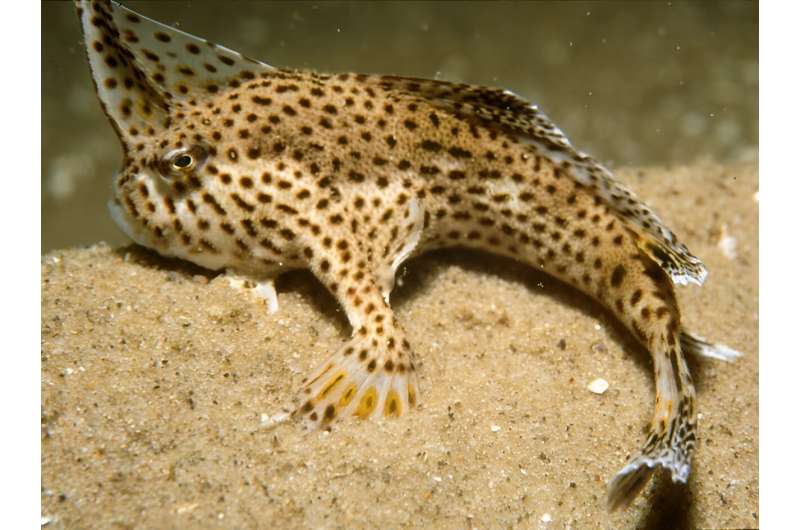Scientists from CSIRO, Australia’s national science agency, have sequenced the first-ever full genome of the rare and critically endangered spotted handfish (Brachionichthys hirsutus). This genetic breakthrough holds immense potential for the conservation of this unique marine species, endemic to the waters of Tasmania. Handfish are a fascinating group of fish known for their unusual hand-like pectoral fins, which they use to ‘walk’ along the ocean floor.

Unlocking the Genetic Secrets of the Spotted Handfish
The spotted handfish is a critically endangered marine species, with fewer than 2,000 individuals remaining in the wild. Its rapid decline is attributed to a variety of factors, including historic fishing practices, coastal development, climate change, and the arrival of invasive species.
By sequencing the complete genome of the spotted handfish, scientists at CSIRO have taken a crucial step in understanding the genetic makeup of this elusive creature. The genome sequence provides a ‘foundation for understanding gene expression in daily life and offers insights into its evolutionary history,’ according to Dr. Gunjan Pandey, a Senior Research Scientist at CSIRO. This knowledge is essential for developing effective conservation strategies and monitoring the genetic diversity of the remaining populations.
Overcoming Challenges in Genome Sequencing
Sequencing the genome of the spotted handfish was no easy feat. As Dr. Pandey explains, ‘Marine species like the spotted handfish are notoriously difficult to work with. The DNA degrades rapidly and becomes contaminated with microorganisms, making assembling a pure genome extremely challenging.’
The CSIRO team overcame these obstacles by employing a specialized ‘low-input protocol,’ which allowed them to sequence the complete genome from a small amount of poor-quality DNA. This innovative approach, customized by the researchers, enabled them to accomplish the task in a matter of days, rather than the typical six to twelve months. ‘We are one of only three teams globally using this protocol,’ Dr. Pandey proudly stated, highlighting the cutting-edge nature of their work.
Harnessing Genetic Data for Targeted Conservation Efforts
The wealth of genetic information gleaned from the spotted handfish genome sequence will be a critical tool in the ongoing efforts to conserve the species. As Principal Investigator Carlie Devine explains, ‘Conservation measures are expanding to include genetics, recognizing a multidisciplinary approach alongside ecology research is essential for effective conservation of threatened species.’
With the genome data, scientists can now assist with species detection, monitor population levels, and even estimate the fish’s lifespan – all crucial information for developing a comprehensive conservation strategy. CSIRO’s multi-pronged approach, which includes a captive breeding program and innovative habitat restoration efforts, will undoubtedly benefit from the insights provided by this groundbreaking genetic study.
